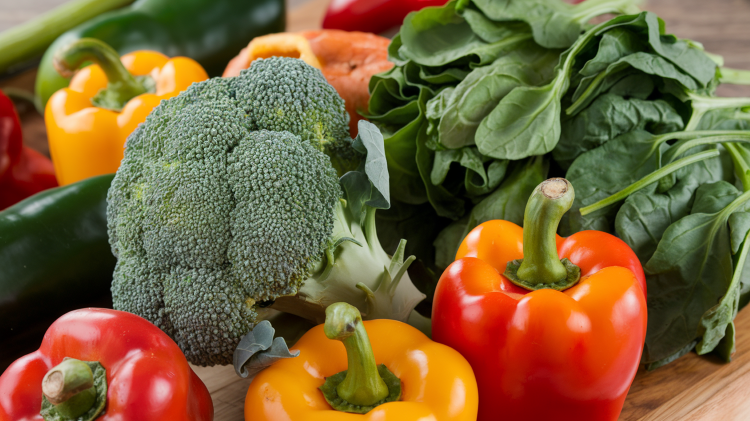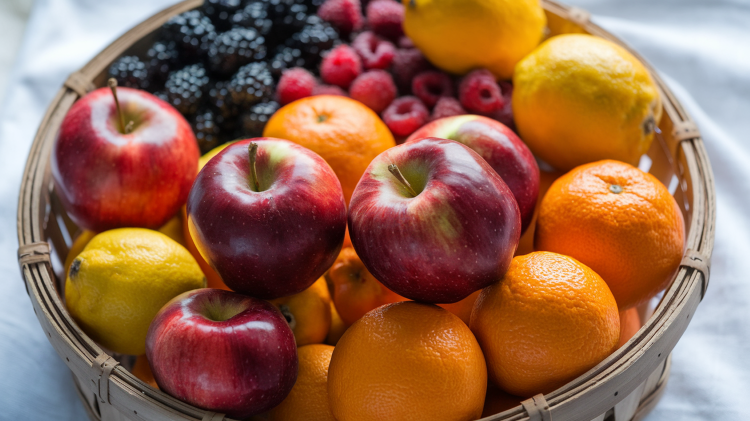The glycemic index (GI) is a tool that helps people understand how foods affect their blood sugar. It ranks carbohydrates on a scale from 0 to 100 based on how quickly they raise blood glucose levels.
Foods with a high GI are digested and absorbed rapidly, causing a sharp spike in blood sugar, while low GI foods are processed more slowly, resulting in a gradual rise.
Amazon Affiliate Disclaimer
We participate in the Amazon Services LLC Associates Program, an affiliate marketing program that allows us to earn fees by linking to Amazon.com and its affiliated sites. If you click on an Amazon affiliate link on our site and make a purchase, we may receive a small commission at no additional cost to you.

This system can be helpful for people with diabetes or those trying to manage their weight. By choosing foods with a lower GI, individuals can better control their blood glucose levels and potentially reduce their risk of developing type 2 diabetes.

The GI scale is divided into three categories: low (55 or less), medium (56-69), and high (70 or more).
Common low GI foods include most fruits and vegetables, while high GI foods often include refined grains and sugary snacks.
It's important to note that the GI is just one factor to consider when making dietary choices, as other aspects like portion size and overall nutrient content also play crucial roles in maintaining good health.
Understanding Glycemic Index
The glycemic index (GI) is a tool that measures how foods affect blood sugar levels. It helps people make informed choices about their carbohydrate intake.
GI values can guide meal planning and support blood sugar management.
The Concept of GI
The glycemic index ranks foods based on how quickly they raise blood sugar. Foods are scored on a scale from 0 to 100. Pure glucose has a GI of 100 and serves as the reference point.
Low GI foods (55 or less) cause a slower, more gradual rise in blood sugar. Medium GI foods range from 56 to 69. High GI foods (70 or above) cause rapid spikes in blood sugar levels.
Common low GI foods include most fruits and vegetables. Medium GI foods include whole wheat products and brown rice. High GI foods often include white bread and sugary snacks.
Measuring Glycemic Index
To measure GI, researchers test foods on a group of people. They give participants a serving of food containing 50 grams of carbohydrates. Then, they track blood sugar levels over the next two hours.
The resulting blood sugar response is compared to the effect of pure glucose or white bread. This comparison determines the food's GI value.
Different labs may use slightly different methods. This can lead to some variation in GI values for the same food.
It's important to use consistent sources when comparing foods.
Factors Affecting GI Values
Several factors can change a food's GI value:
- Ripeness: Riper fruits tend to have higher GI values
- Processing: More processed foods often have higher GI values
- Cooking method: Longer cooking times can increase GI
- Fiber content: Foods high in fiber usually have lower GI values
Other factors include the combination of foods eaten together and individual differences in digestion. Fat and acid in a meal can lower the overall GI. Personal factors like insulin sensitivity also play a role.
Glycemic Index and Health
The glycemic index affects key aspects of health. It plays a role in managing blood sugar, heart disease risk, and weight control.
GI's Role in Diabetes Management
Diabetes management can benefit from using the glycemic index. Low GI foods help keep blood sugar levels steady. This is crucial for people with diabetes.
Type 2 diabetes patients may find it easier to control their condition with low GI foods. These foods cause a slower rise in blood sugar. This can lead to better long-term blood sugar control.
High GI foods can cause quick spikes in blood sugar. For diabetics, this can be harmful. It may lead to complications over time.
Eating more low GI foods can help reduce the need for diabetes medications. It may also lower the risk of diabetes-related health issues.
Glycemic Index and Heart Disease
The glycemic index may affect heart disease risk. High GI diets have been linked to higher rates of heart problems.
Low GI diets can help improve cholesterol levels. They may lower "bad" LDL cholesterol and raise "good" HDL cholesterol. This can reduce the risk of heart disease.
Eating low GI foods may also help control blood pressure. High blood pressure is a major risk factor for heart disease.
A diet rich in low GI foods often includes more fiber, vitamins, and minerals. These nutrients support heart health.
Weight Management and Low GI Foods
Low GI foods can aid in weight management. They tend to keep you feeling full for longer. This can help reduce overall calorie intake.
High GI foods may lead to quick hunger after eating. This can cause overeating and weight gain.
Low GI foods often have more fiber. Fiber aids digestion and helps control appetite.
Some low GI foods to include for weight management:
- Whole grains
- Legumes
- Most fruits and vegetables
- Nuts and seeds
These foods provide nutrients while helping to maintain a healthy weight.
Types of Glycemic Index Foods
Foods are grouped into low, medium, and high glycemic index categories based on how quickly they raise blood sugar levels. These categories help people make informed food choices for managing blood glucose.
High GI Foods
High glycemic index foods have a GI value of 70 or more. They cause rapid spikes in blood sugar levels. Some common high GI foods include:
- White bread
- White rice
- Potatoes
- Sugary snacks and drinks
Many processed foods fall into this category. Some fruits like watermelon and pineapple also have high GI values. These foods are best eaten in moderation, especially for people watching their blood sugar.
Medium GI Foods
Medium glycemic index foods have a GI value between 56 and 69. They cause a moderate rise in blood sugar. Examples include:
- Whole wheat bread
- Brown rice
- Sweet potatoes
- Corn
Some fruits like bananas and grapes are in this category. These foods can be part of a balanced diet but should be eaten in reasonable portions.
Low GI Foods
Low glycemic index foods have a GI value of 55 or less. They cause a slower, more gradual rise in blood sugar. Low GI foods include:
- Most vegetables
- Beans and legumes
- Many fruits like apples and berries
- Whole grains like oats and quinoa
These foods are often recommended for people with diabetes or those trying to manage their weight. They help keep blood sugar levels stable and provide longer-lasting energy.
Eating a mix of low and medium GI foods can help balance blood sugar levels. It's also important to consider portion sizes and overall diet quality, not just GI values alone.
Incorporating Low GI Foods in Your Diet

Adding low glycemic index foods to your meals can help manage blood sugar levels. This approach involves selecting the right carbohydrates, using healthy cooking methods, and controlling portion sizes.
Choosing Low GI Carbohydrates
Low GI foods have a glycemic index of 55 or less. These include:
- Whole grains: quinoa, barley, oats
- Legumes: lentils, chickpeas, kidney beans
- Non-starchy vegetables: broccoli, spinach, bell peppers
- Fruits: berries, apples, citrus fruits
Swap high GI foods for low GI alternatives. For example, choose whole grain bread instead of white bread or sweet potatoes instead of regular potatoes.
Combine low GI foods with proteins and healthy fats. This can further slow digestion and reduce the overall glycemic impact of a meal.
Healthy Cooking Methods
Cooking methods can affect the glycemic index of foods. Some beneficial techniques include:
- Boiling: This method can lower the GI of pasta and potatoes.
- Steaming: Preserves nutrients and keeps the GI low.
- Grilling: A healthy way to cook meats and vegetables without added fats.
Avoid deep-frying, as it can increase the fat content and potentially raise the GI. Use herbs and spices instead of sugary sauces to add flavor to dishes.
Prepare meals in advance to avoid relying on high GI convenience foods. This planning can make it easier to stick to a low GI diet.
Understanding Portions and Frequency
Portion control is key in a low GI diet. Even low GI foods can raise blood sugar if eaten in large amounts.
Use the plate method: Fill half the plate with non-starchy vegetables, a quarter with lean protein, and a quarter with low GI carbohydrates.
Eat smaller, more frequent meals throughout the day. This can help maintain stable blood sugar levels and prevent overeating.
Include a low GI food in each meal or snack. This consistent approach helps keep blood sugar levels steady throughout the day.
Monitor portion sizes of high GI foods when they are consumed. Pairing them with low GI options can help balance their impact on blood sugar.
Beyond the Glycemic Index

The glycemic index isn't the only tool for managing blood sugar. Other factors like glycemic load and food combinations also play key roles in balancing glucose levels.
Glycemic Load and Its Importance
Glycemic load considers both the quality and quantity of carbs in a meal. It's calculated by multiplying a food's glycemic index by its carb content in grams, then dividing by 100.
A low glycemic load is 10 or less. Medium is 11-19. High is 20 or more.
Foods with fiber, protein, and fat can lower the glycemic load of a meal. These nutrients slow digestion and help prevent blood sugar spikes.
For example, adding almonds to white bread lowers its glycemic load. The fat and protein in nuts balance out the bread's quick-digesting carbs.
Combining Foods for Balanced Blood Sugar
Pairing high and low glycemic index foods can help steady blood sugar levels. This strategy is called food combining.
Adding protein to carbs slows digestion. It helps avoid rapid rises in blood glucose.
For instance, eating an apple with peanut butter instead of alone.
Fiber-rich foods also help balance blood sugar when eaten with higher glycemic index items.
Vegetables are great for this purpose.
Healthy fats play a similar role. They slow the absorption of sugar into the bloodstream.
Adding avocado to toast is one way to use this principle.
By thoughtfully combining foods, people can better manage their blood sugar and reduce the risk of insulin resistance.
Conclusion
In conclusion, the glycemic index (GI) serves as a valuable tool for understanding how different foods impact blood sugar levels, offering insights that are particularly beneficial for individuals managing diabetes, heart health, or weight.
By prioritizing low GI foods—such as whole grains, legumes, fruits, and non-starchy vegetables—people can achieve steadier blood sugar levels, prolonged satiety, and improved overall health.
However, it’s important to remember that the GI is just one aspect of making informed dietary choices. Factors like portion sizes, cooking methods, and the combination of foods also play critical roles in determining a meal’s impact on blood sugar.
Integrating low GI foods into daily meals doesn’t require drastic changes; simple swaps and balanced food pairings can make a significant difference. By adopting these strategies alongside other healthy habits, individuals can better manage their blood sugar and reduce the risk of chronic diseases while enjoying a varied and nutritious diet.


